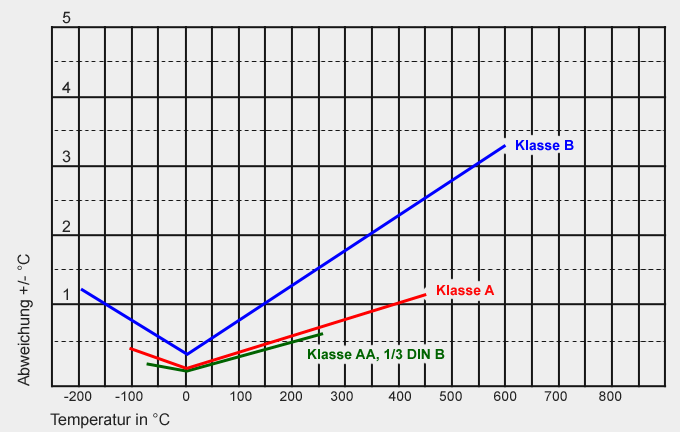Characteristic line for Pt 100 resistor of tolerance-classes
Deviation in °C for Pt 100 sensors of the classes B; A; AA
Temperature range of validity of limit deviation
The lower bound of temperature for the limit deviation its about the available verify requirement limited of –196 °C (-195,80°C are the boiling point from the nitrogen, a usual temperature for calibrate). The upper limit of temperature are fixed of +661 °C , (660,323 °C are solidification point from aluminium, a usual temperature for calibrate). The reasons are, that the analysis found on industry resistors a lot of significant deviants of temperature over 650 °C. That’s why in these temperature range the limit deviation for the thermometer or resistors between the producer and user should be specified.
Accuracy-class (formulas) of IEC 751 - NEW
The values of limit deviation for resistance thermometers are in the following table:
annotation 1: [t] = values of the temperature unsigned
1/10 DIN B = user-specific, only with calibrate protocol
Standardized platinum-temperature-sensors
After DIN EN 60751 amounts to 100,000 ohm the face value with 0 ºC. You can speak therefore also from a Pt 100-temperature-sensor. In addition, also temperature-sensors become with face values of 200; 500 and 1000 ohm offered. Their advantage lies in the higher sensitivity, that means a bigger alteration of the resistance-values in dependence on the temperature. The resistance-alterations in the temperature-area until 100 ºC are:
- 0,4 Ohm/ K bei Pt 100
- 0,8 Ohm/ K bei Pt 200
- 2,0 Ohm/ K bei Pt 500
- 4,0 Ohm/ K bei Pt 1000


